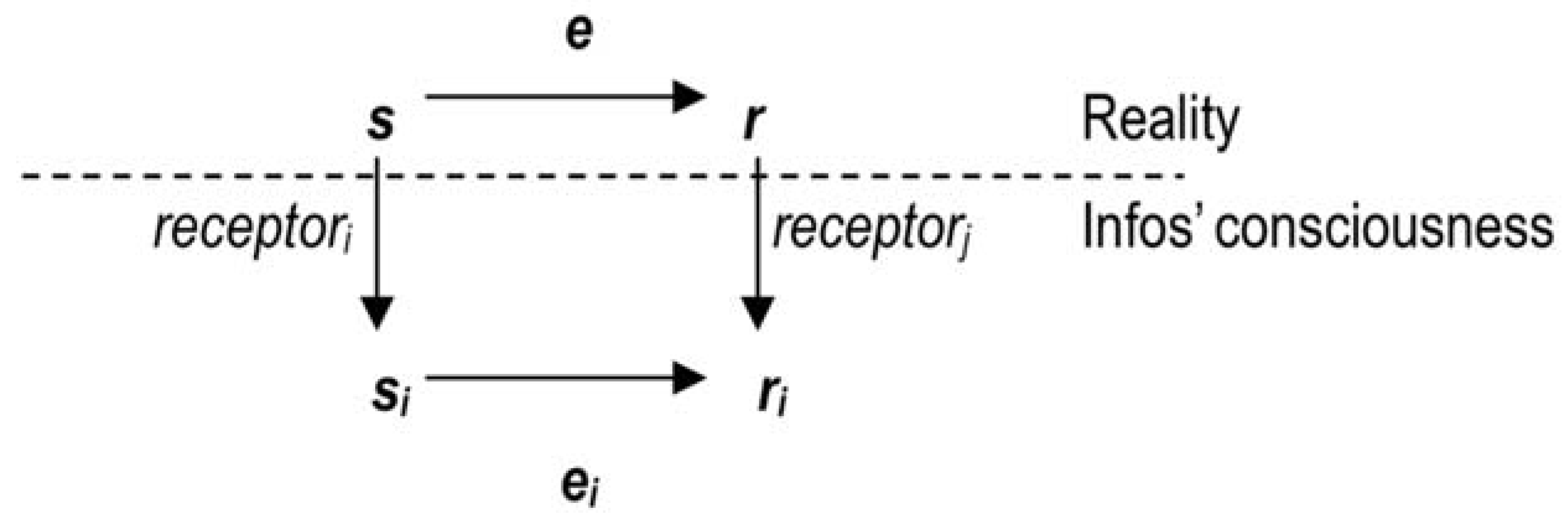Quality of Information †
Abstract
:1. Introduction
2. Basic Concepts
2.1. Entity
2.2. Interaction
2.3. Reflection
2.4. INFOS
2.5. Information and Information Expectation
3. Quality of Information
4. Conclusions
Funding
Institutional Review Board Statement
Informed Consent Statement
Data Availability Statement
Conflicts of Interest
References
- Markov, K. A Multi-Domain Access Method. In Proceedings of the International Conference on Computer Based Scientific Research, Plovdiv, Bulgaria, 1–4 April 1984; pp. 558–563. [Google Scholar]
- Markov, K.; Ivanova, K.; Mitov, I. Basic Structure of the General Information Theory. Int. J. Inf. Theor. Appl. 2007, 14, 5–19. [Google Scholar]

Publisher’s Note: MDPI stays neutral with regard to jurisdictional claims in published maps and institutional affiliations. |
© 2022 by the author. Licensee MDPI, Basel, Switzerland. This article is an open access article distributed under the terms and conditions of the Creative Commons Attribution (CC BY) license (https://creativecommons.org/licenses/by/4.0/).
Share and Cite
Markov, K. Quality of Information. Proceedings 2022, 81, 118. https://doi.org/10.3390/proceedings2022081118
Markov K. Quality of Information. Proceedings. 2022; 81(1):118. https://doi.org/10.3390/proceedings2022081118
Chicago/Turabian StyleMarkov, Krassimir. 2022. "Quality of Information" Proceedings 81, no. 1: 118. https://doi.org/10.3390/proceedings2022081118
APA StyleMarkov, K. (2022). Quality of Information. Proceedings, 81(1), 118. https://doi.org/10.3390/proceedings2022081118





